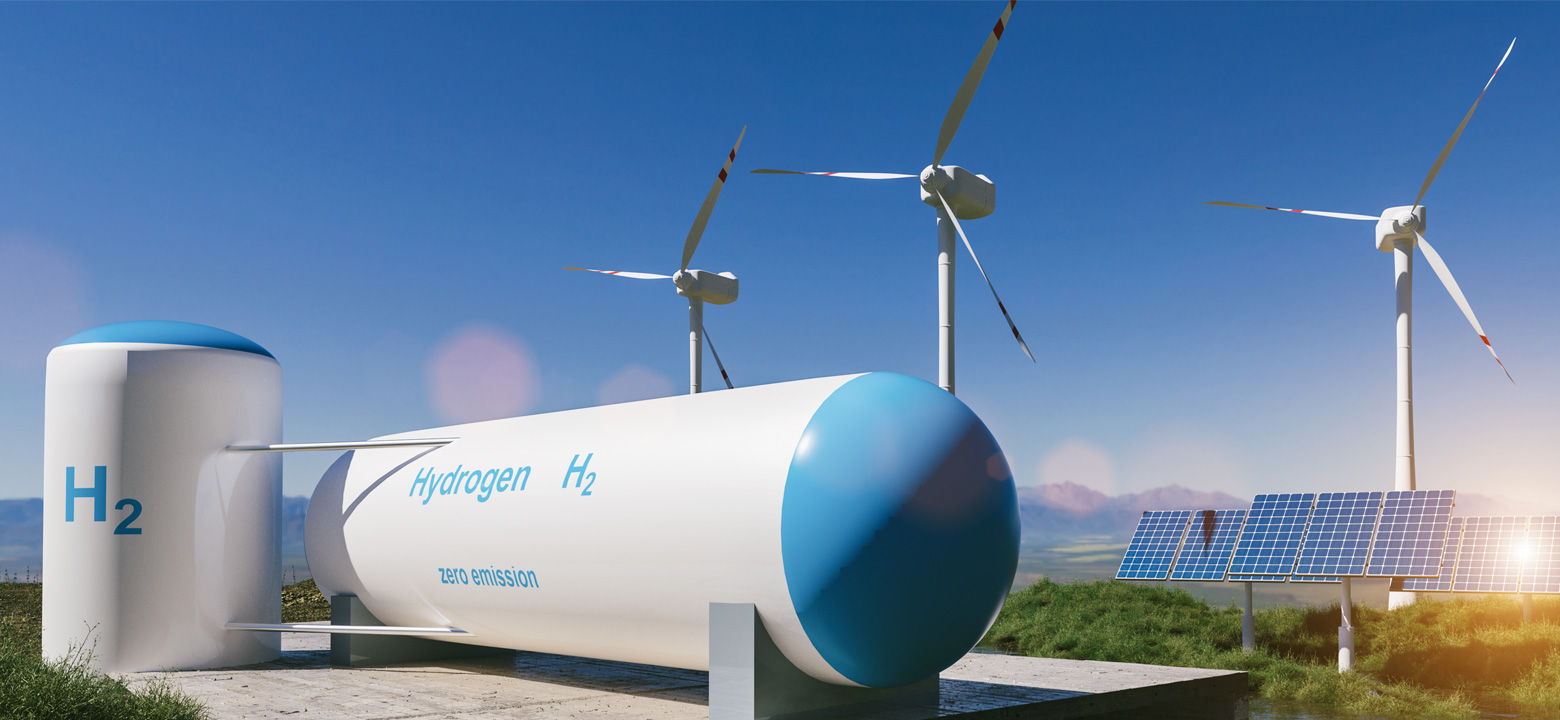
One of the biggest challenges facing renewable energy sources is storage. Battery technology isn't yet efficient enough to be a viable long-term solution, and batteries can be complicated and expensive to transport. There's a potential way forward for renewable power, no batteries needed: Hydrogen.
Hydrogen is already a key component of power infrastructure outside of the US. It's easier to transport than batteries and requires fewer resources to make and transport. It can replace a portion of natural gas, reducing carbon emissions. In 2003, George W. Bush launched a $1.2 billion dollar research initiative to increase the use of hydrogen fuel cell vehicles. Sadly, it was before its time—batteries were less expensive than hydrogen and the electrolyzers required to make it. Now, energy experts are beginning to see hydrogen in a new light.
Hydrogen is produced via electrolysis. High school science students across the country replicate this process every year—they connect a cathode and anode to a power source and place them in a container of water. This splits the water into its component elements, hydrogen, and oxygen. Hydrogen is released at the cathode and oxygen at the anode.
The trouble with this is that electrolysis requires energy to perform. If you're using an easily transportable, non-renewable energy source, it doesn't make sense to spend that power on creating hydrogen for use as fuel. For wind farms, the opposite is true. On windy days, turbines can produce more power than is needed. This spare wind energy can either be stored in batteries or lost. Using it to produce hydrogen would create a backup store of energy for windless or high-demand days.
Right now, the US's energy grid is optimized for fossil fuel. They don't really have the capacity to handle the sheer number of renewables that are necessary to completely replace non-renewable power. Even in areas with abundant wind and solar power, fossil fuels still have to fill in gaps in supply.
Fossil fuels like coal have the advantage of storability. If a windless day keeps turbines from spinning, or high demand places a lot of stress on the power supply, it's relatively easy for power plants to fire up coal generators to produce more power. On windy or low-demand days, coal can just sit in storage until it's needed. If fossil fuel plants are completely shut down, the US could face up to fourteen days of low electricity output at a stretch.
These wind power shortages wouldn't be across the entire US, however. Some areas would still be able to produce abundant electricity, so experts advocate expanding the power grid to make it easier to send power where it's needed. This will require a lot of money, and considerable planning before it's a feasible option. Even then, this expansion will take a lot of time to complete.
That's where hydrogen comes in. Hydrogen carries similar advantages to coal and other fossil fuels. If wind farms convert spare power into hydrogen, it can be stored until it's needed. If fossil fuel plants get phased out, wind farms can use stored hydrogen to offset drops in energy production. Hydrogen can also be transported similarly to natural gas, allowing it to reach areas experiencing a drop in wind power.
Hydrogen is useful for more than just electricity, too. Industrial processes like atomic hydrogen welding rely on it, and it's also routinely used as a coolant. A blend of hydrogen and nitrogen is also used to prevent oxidative damage during manufacturing. The majority of the hydrogen used by industry is produced using electricity from fossil fuels. If wind powered hydrogen replaces it, that will still significantly cut down on carbon emissions—all without hydrogen ever making it into the power grid.
In the past, hydrogen wasn't considered feasible because it was expensive to produce and store. Now, renewable energy provides a cost-effective way to power electrolysis. If wind farms routinely end up overproducing, it makes sense to use this excess to create hydrogen.
As technology advances, the cost of storing hydrogen will drop. While it's tricky to anticipate exactly how much, simulations suggest that it won't be long before this gas emerges as a clean, cost-effective, and efficient renewable power source.
Hydrogen was originally put forth as an alternative to gasoline for vehicles. Needless to say, it never quite made it off of the ground. Now that experts are taking a big picture look at the US's energy grid, power needs, and renewable energy capacity, hydrogen is ideally poised to make a big comeback.